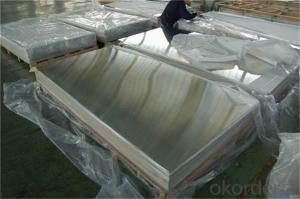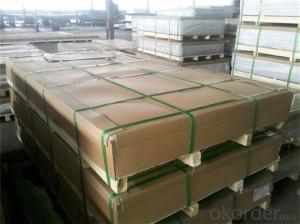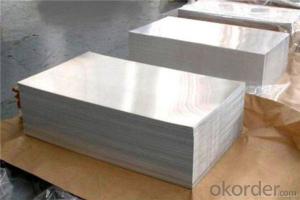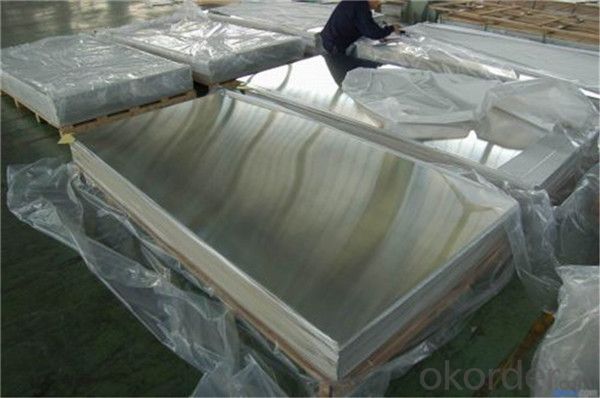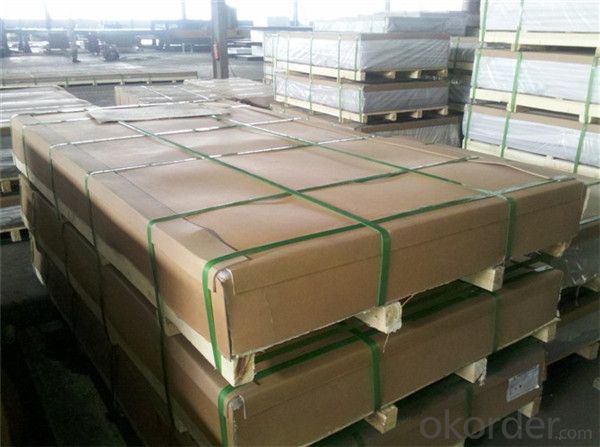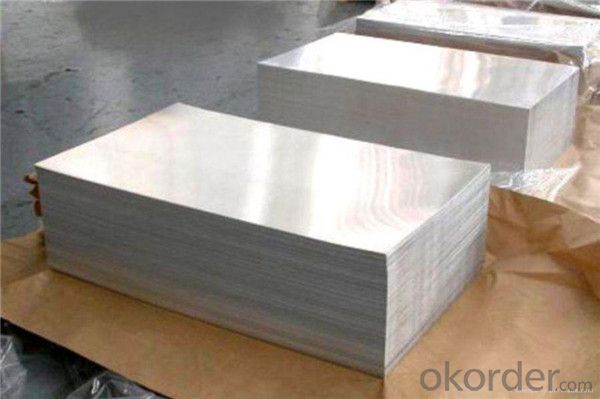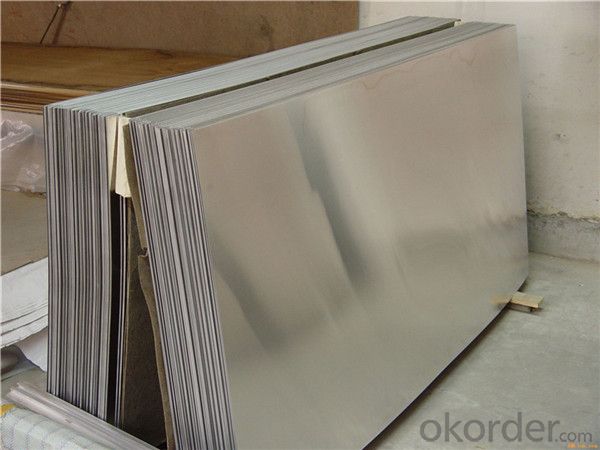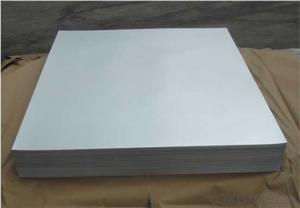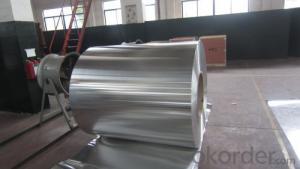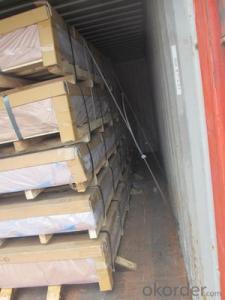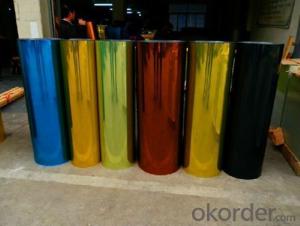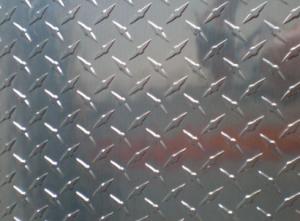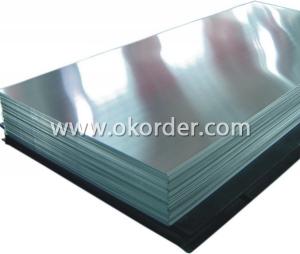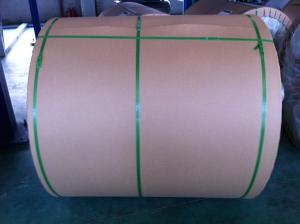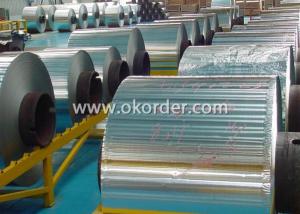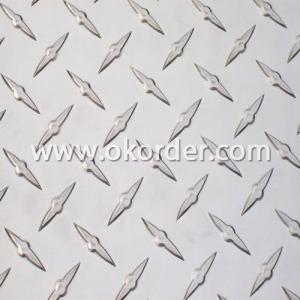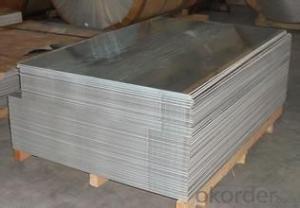Aluminum Foil Individual Sheets - Aluminum Sheets and Coil AA1100, 1050, 1060, 3003, 3105, 3005
- Loading Port:
- Shanghai
- Payment Terms:
- TT or LC
- Min Order Qty:
- 5 m.t.
- Supply Capability:
- 100000 m.t./month
OKorder Service Pledge
OKorder Financial Service
You Might Also Like
Specification
Specifications
Grade
| 1000 Series: 1050 1060 1070 1100 1200 1235 etc. 3000 Series: 3003 3004 3005 3104 3105 3A21 etc. 5000 Series: 5005 5052 5083 5086 5154 5182 5251 5754 etc. 6000 Series: 6061 6063 6082 6A02 etc. 8000 Series: 8006 8011 8079 etc. |
Thickness | 0.2~320mm |
Width | <2800mm< span=""> |
Color | Metallic, Solid, RAL or by customer requirements |
Coating paint: | PVDF(Polyvinylidene Fluoride), PE(Polyester ) |
Coating thickness | as per customer’s request |
Gloss | 10-90%(EN ISO-2813:1994) |
Total coating thick | Polyester18~27micron(EN ISO-2360:1995) PVDF27 ~35micron(EN ISO-2360:1995) |
Coating hardness | 2H |
Protective film | PVC film, Colorless transparent or White-black |
Adhesion | 5B (EN ISO-2409:1994) |
Impact resistance | No cracking and peeling (A.S.T.M D2794-1993) |
Flexibility (T-bend) | 0T- 2T |
Temper | H16, H18, H24, H26, H26 |
Certification | ISO9001:2000, CE, SGS |
Payment | L/C ,T/T |
Brief Introduction for Cold Rolled Steel Coil
Cold Rolled Steel Coil is steel that has been worked below its recrystallization temperature by passing it between a pair of rollers. Recrystallization temperature is the temperature at which grains in the lattice structure of the metal have been rearranged, leaving it free of strain and deformations. Cold Rolled Steel Coil is pretreated before being cold rolled with a process known as pickling, which uses strong acids to remove scale and other impurities. The Cold Rolled Steel Coil is then passed through rollers to reduce its thickness. Most cold rolling takes place in multiple passes and as the size of the Cold Rolled Steel Coil is further reduced, its strength and hardness both increase, but its ductility decreases. After cold rolling, heating the metal up in a process known as annealing can restore some of its ductility. The final Cold Rolled Steel Coil may be manufactured in the form of sheets, strips, bars, or other forms.
FAQ
1. How can I get some samples?
We are honored to offer you samples. New clients are expected to pay for the courier cost. The samples are free for you.
2 Do you have any certificates?
Our products passed inspection of SGS, FDA, and CE Quality is priority! Every worker keeps the QC from the very beginning to the very end, Quality control department especially responsible for quality checking in each process.
3 Can your factory print or emboss my logo on the goods?
Yes, we can print or emboss the logo on the goods or their packing box.
4 What information should I let you know if I want to get a quotation?
1) The specification of products (length x width x thickness);
2) The temper and alloy.
3) The final product you will use to be made
4 It will be better if you can show us the pictures or design sketch. Samples will be best for clarifying. If not, we will recommend relevant products with details for reference.We usually produce goods based on customers
Samples or based on customers’ picture, logo, sizes etc.
Our Services
1. Reasonable production arrangement to make delivery very fast;
2. We are able to provide leading tolerances, metallurgical assistance, quick and reliable delivery, samples for new products, etc.
3. We have the strong capability to meet your particular requirement for the products.
4.To guarantee the quality of the products we can meet most of the standards all over the world.
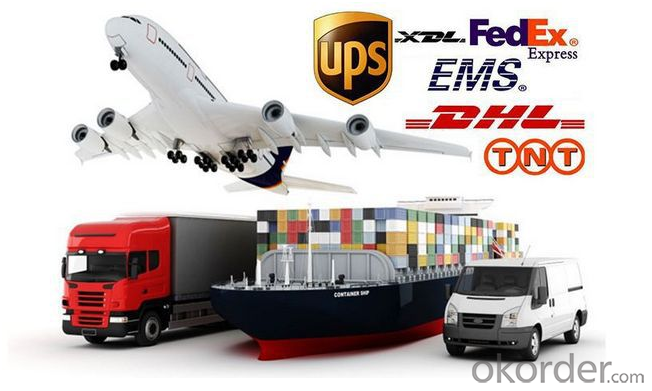
Photos of products
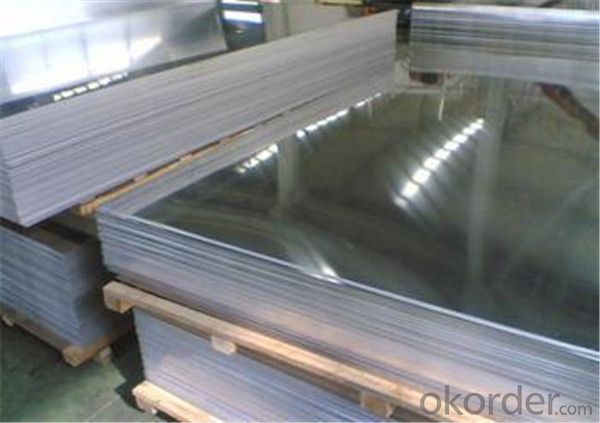
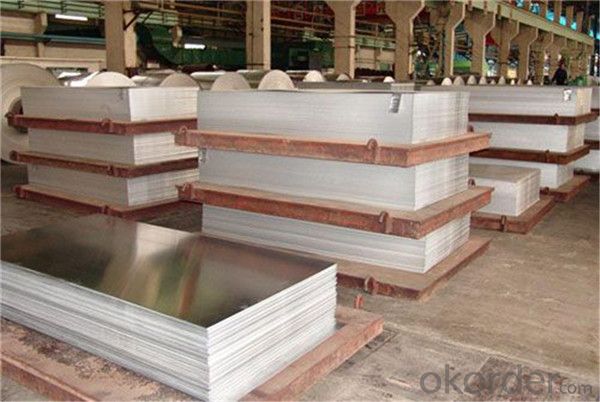
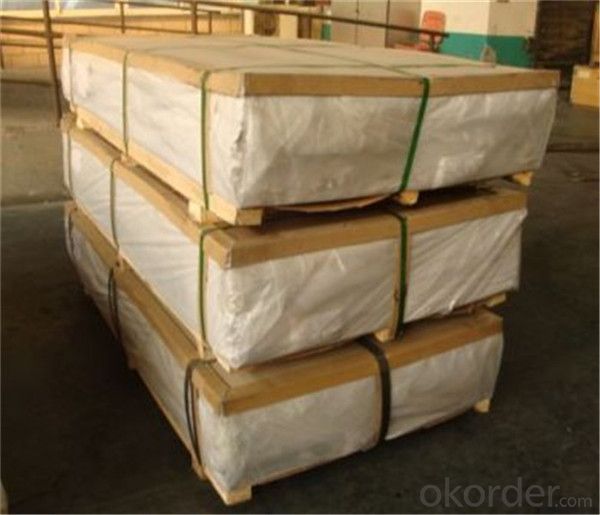
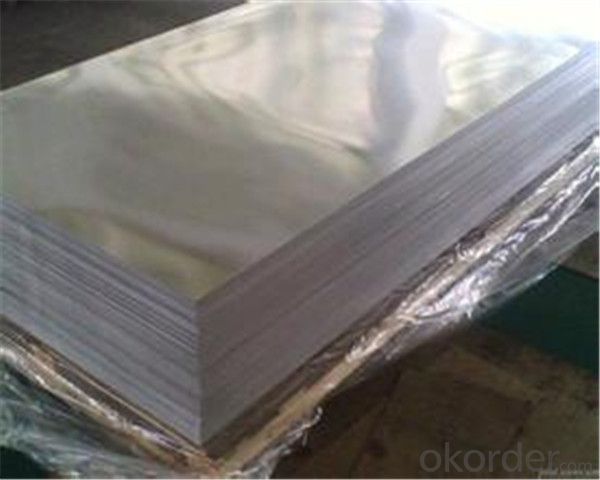
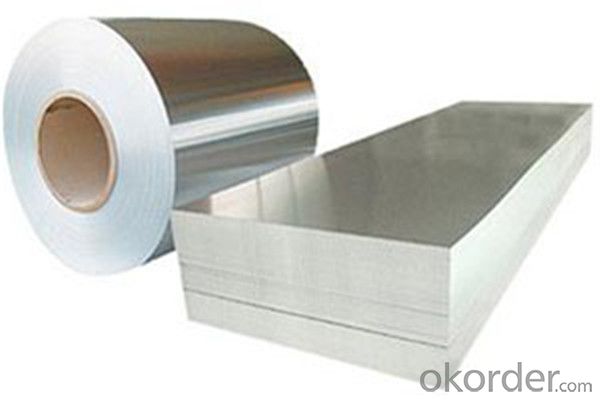
- Q: why is aluminium used instead of copper for high voltage electrical cables????
- Aluminum would only make sense in low current applications where cost and weight are important.
- Q: Are the aluminum sheets suitable for manufacturing electronics components?
- Yes, aluminum sheets are suitable for manufacturing electronics components. Aluminum is a lightweight, durable, and cost-effective material that is widely used in the electronics industry. It has excellent electrical conductivity, which is essential for the proper functioning of electronic devices. Aluminum sheets can be easily shaped, cut, and formed into various components such as heat sinks, enclosures, and connectors. Additionally, aluminum has good thermal conductivity, allowing it to effectively dissipate heat generated by electronic components. This makes aluminum sheets an ideal choice for manufacturing electronics components.
- Q: Can aluminum sheets be easily shaped or bent?
- Yes, aluminum sheets can be easily shaped or bent due to their malleability and low density.
- Q: Can aluminum sheet be used for electrical connectors?
- Indeed, aluminum sheet can be utilized for electrical connectors. Aluminum, being an excellent conductor of electricity, finds widespread usage in diverse electrical applications, connectors included. Lightweight, cost-effective, and possessing commendable thermal and electrical conductivity characteristics, aluminum proves to be an advantageous choice. Nevertheless, it is important to acknowledge that aluminum exhibits lower electrical conductivity in comparison to copper, the predominant material employed for electrical connectors. Consequently, aluminum connectors may encounter greater resistance and lower capacity for carrying current when pitted against their copper counterparts. Nevertheless, through proficient design and engineering, these limitations can be overcome, rendering aluminum sheet a viable alternative for electrical connectors in specific scenarios.
- Q: Bauxite ore contains aluminum oxide, which is decomposed using electricity to produce aluminum metal and oxygen. What mass of aluminum metal can be produced from 125 g of aluminum oxide?I'm really confused and I need help. Thanks.
- Safely Permanently Remove Moles, Warts and Skin Blemishes
- Q: 1100 scope of application of aluminum plate
- 1100 aluminum plate is generally used in utensils, heat sink, caps, printing plates, building materials, heat exchanger components, but also can be used as deep stamping products. It is widely used in various fields ranging from cooking utensils to industrial equipment
- Q: Is it suitable to use aluminum sheets in outdoor settings where they will be subjected to weather conditions?
- <p>Yes, aluminum sheets can be used for outdoor applications, even when exposed to weathering. Aluminum is a durable and corrosion-resistant material, which makes it suitable for outdoor use. It does not rust like iron or steel and can withstand various weather conditions. However, it's important to use aluminum alloys specifically designed for outdoor use, and to apply protective coatings or finishes to enhance its resistance to weathering and extend its lifespan.</p>
- Q: How does aluminum sheet perform in corrosive environments?
- Aluminum sheet performs exceptionally well in corrosive environments due to its intrinsic corrosion resistance. It forms a thin, protective oxide layer on its surface, which acts as a barrier against further corrosion. This oxide layer, known as aluminum oxide, is highly stable and prevents the underlying metal from being affected by moisture, chemicals, or other corrosive elements. In most common corrosive environments, such as air, water, and mild acids, aluminum sheet is highly resistant and maintains its integrity for extended periods. It does not rust or corrode like other metals, such as iron or steel. This makes aluminum an ideal choice for applications exposed to moisture or harsh atmospheric conditions. However, aluminum may be susceptible to corrosion in certain aggressive environments, such as highly acidic or alkaline solutions. In these cases, the protective oxide layer may dissolve, leading to localized corrosion known as pitting. To mitigate this risk, aluminum can be alloyed with other elements like magnesium or zinc to enhance its corrosion resistance. Overall, aluminum sheet is widely recognized for its excellent performance in corrosive environments, making it a preferred material for various applications, including marine, construction, automotive, and aerospace industries. Its lightweight nature, coupled with its corrosion resistance, makes aluminum an attractive option in environments where durability and longevity are critical.
- Q: I have a set of Chrome Aluminum rims, and two of them have scratches on them. So instead of buying new ones, is it possible to paint them. I was thinking black.
- You have either chrome or aluminum, not the same, 2 different rims. You cannot paint either, paint eill not stick to chrome or aluminum, it will just flake off.
- Q: Are the aluminum sheets suitable for manufacturing automotive chassis?
- Indeed, automotive chassis manufacturing can make use of aluminum sheets. Aluminum, being a lightweight and durable material, is an excellent option for constructing automotive chassis. Its qualities make it an ideal choice, as it offers various advantages such as enhanced fuel efficiency, improved handling, and increased structural rigidity. Moreover, aluminum possesses the ability to absorb and disperse impact energy effectively, thereby enhancing passenger safety. Additionally, its resistance to corrosion contributes to the longevity of the chassis. Ultimately, employing aluminum sheets in the manufacturing of automotive chassis yields numerous benefits and is a fitting choice for this purpose.
Send your message to us
Aluminum Foil Individual Sheets - Aluminum Sheets and Coil AA1100, 1050, 1060, 3003, 3105, 3005
- Loading Port:
- Shanghai
- Payment Terms:
- TT or LC
- Min Order Qty:
- 5 m.t.
- Supply Capability:
- 100000 m.t./month
OKorder Service Pledge
OKorder Financial Service
Similar products
Hot products
Hot Searches
Related keywords
